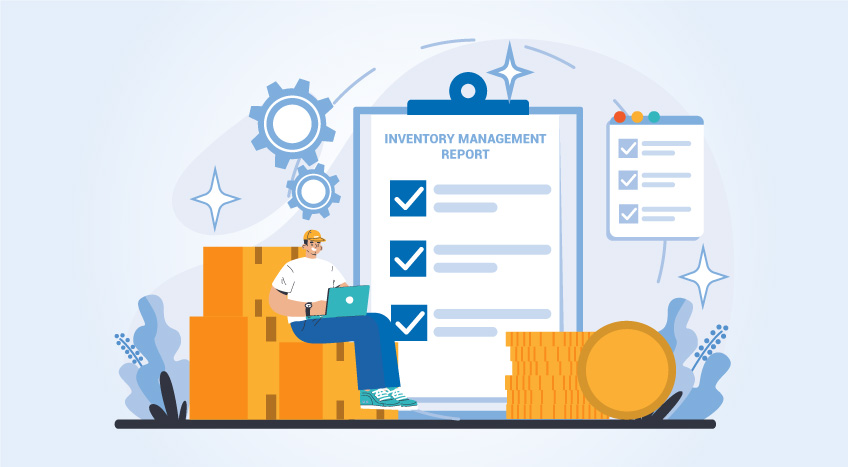Running a business is hard, especially when you are just starting out on your business venture or running out of funds. In times when funds unavailability becomes a deterrent, inventory cost cutting isn't a bad idea. Doing so can help you stay in the game and give you some time to get things back on track.
For businesses dealing in goods and products, an optimal inventory management can be a remarkable cost-cutting tool. It can help you save on inventory costs, especially during challenging times, such as a recession or slump.
In this blog, we will discuss how to reduce inventory costs effectively:
8 Tips to reduce inventory costs
Here are some of the best practices that businesses can implement to reduce inventory costs–
Use an inventory management software
Implementing a robust inventory management software can help you streamline the whole inventory management process. From procuring inventory to stocking it to accurately tracking the stock, generating reports and more – you can streamline all these processes with a single tool, leading to a more efficient inventory management process and reduced inventory costs.
Ensure better demand forecasting
Demand forecasting means using historical data and information about the market trends to predict what will be the consumer demand in the near future. It helps your business understand how much stock to hold and plan well in advance how much inventory to procure. If it indicates a surge, you can meet the inventory demand without burning out unnecessary inventory costs at the last moment.
Make sure you have a safety stock
Whether you have a lean business or an expanded one, you need to maintain a safety stock. This is also called emergency stock. Make sure that you have a certain percentage of inventory stacked as safety stock. If, for any reason, you have to use it, restock it at the earliest, so that you don’t have to pay higher costs to meet contingency inventory requirements.
Keep track of reorder points
To ensure reduced inventory costs, it is of utmost importance to consistently track the reorder points. Reorder points are the time points when you have to order the shipment to restock your inventory. Not keeping precise track of them can incessantly increase the cost of procuring and restocking inventory.
Organize your inventory well
A well-organized warehouse allows you to pick and deliver the inventory to the end point in time at the least possible cost. An unorganized warehouse can significantly increase traveling and transport costs. Well-arranged warehouses help keep the inventory costs. This is more important, especially for large warehouses where workers have to cover significant distances between different points for order fulfilment.
Just-in-time inventory system
Just-in-time is a method of inventory management where there is no unnecessary overstocking or accumulation of inventories. As the name suggests, it is an inventory management system wherein you order or procure only necessary inventory to meet the immediate demand. This ensures that you are not investing resources to hold a stock of inventory that needs storage for a long time. This immediate demand-based inventory management ensures optimal inventory costs.
Implement ABC inventory arrangement
There is something called the Pareto principle, according to which almost 80% of the value of inventory is associated with 20% of the inventory. This is no rocket science that 20% of the inventory must be on the top priority list. The right inventory management system can classify and segregate the whole inventory of the business into 3 segments, namely A, B and C. Inventory under A is the most important set of inventory, B being the second in line, and C being the least important.
This classification will help you minimize your inventory costs because you will be maintaining your inventory in such a way that the most important stock will be given the highest priority. Such inventory management cushions you against any major losses surrounding your inventory.
Centralized system for inventory management
Inventory management is not a mutually exclusive or separate set of operations that can be carried out without considering other operations or the sync of the complete supply chain management. Especially, in businesses where inventory is managed at multiple levels, it is of primary importance to ensure that inventory arrangement, reporting, auditing, procurement, and delivery are in line with the operations of the supply chain management as well as end delivery to meet the customer demand. Without this transparent tracking, the inventory costs will shoot up or there will be a shortage of inventory when it comes to meeting the real-time demand.
Bottom line
While there may be ups and downs when you are running a business, implementing inventory cost cutting measures can help you in many ways. This is where inventory management becomes non-negotiable for businesses that sell goods. At the same time, it is important to note that inventory costs are not adding up to create unnecessary expenses and waste of resources. By following these tips, you can ensure your business inventory is maintained and managed without putting unnecessary burden on your budget.










